Tom's Guide Verdict
The Razer Huntsman V2 combines innovative optical switches with quieter keycaps and gorgeous RGB lighting for a mild upgrade over its predecessor.
Pros
- +
Comfortable, effective keys and switches
- +
Beautiful RGB lighting
- +
Sleek design
- +
Cheaper than before
Cons
- -
Few significant upgrades
- -
Still pretty expensive
Why you can trust Tom's Guide
Key Type: Optical
Switch Type: Razer Clicky Purple or Razer Linear Red
Illumination: Full RGB
Size: 17.5 x 5.5 x 1.0 inches
The Razer Huntsman V2 is an excellent example of how the company knows not to mess with a good thing. When the original Razer Huntsman Elite debuted in 2018, I complimented the gaming keyboard’s sleek design, novel switches, and excellent performance. The Huntsman V2 still has all of those things, but now it’s a little cheaper than before ($190 to $200, depending on switch type), and features a slightly quieter typing experience.
I searched long and hard for significant differences between the two devices, but didn’t find many. This time around, the keycaps are slightly different, the wraparound LED strip is gone and the whole device is a little quieter. That’s about it, though. Razer took a good thing, gave it a slight upgrade and ran with it. And, since the final product is still an excellent gaming keyboard, I can’t complain too much.
Compared to its competitors, the Huntsman V2 is still quite expensive, and doesn’t offer many concrete benefits over a more traditional mechanical keyboard. But if you like the idea of sending signals through light waves rather than metal springs, this mild upgrade is probably worth a look.
Read on for our full Razer Huntsman V2 review.
Razer Huntsman V2 review: Design
The Razer Huntsman V2 holds few surprises for anyone who’s checked out a Razer keyboard over the past few years. Like the other Huntsman or more recent BlackWidow models, the Huntsman V2 features an all-black plastic chassis with a brushed, matte appearance. There’s a discreet Razer logo on the detachable wrist rest; otherwise, this would look right at home in either a gaming nook or on an office desk.
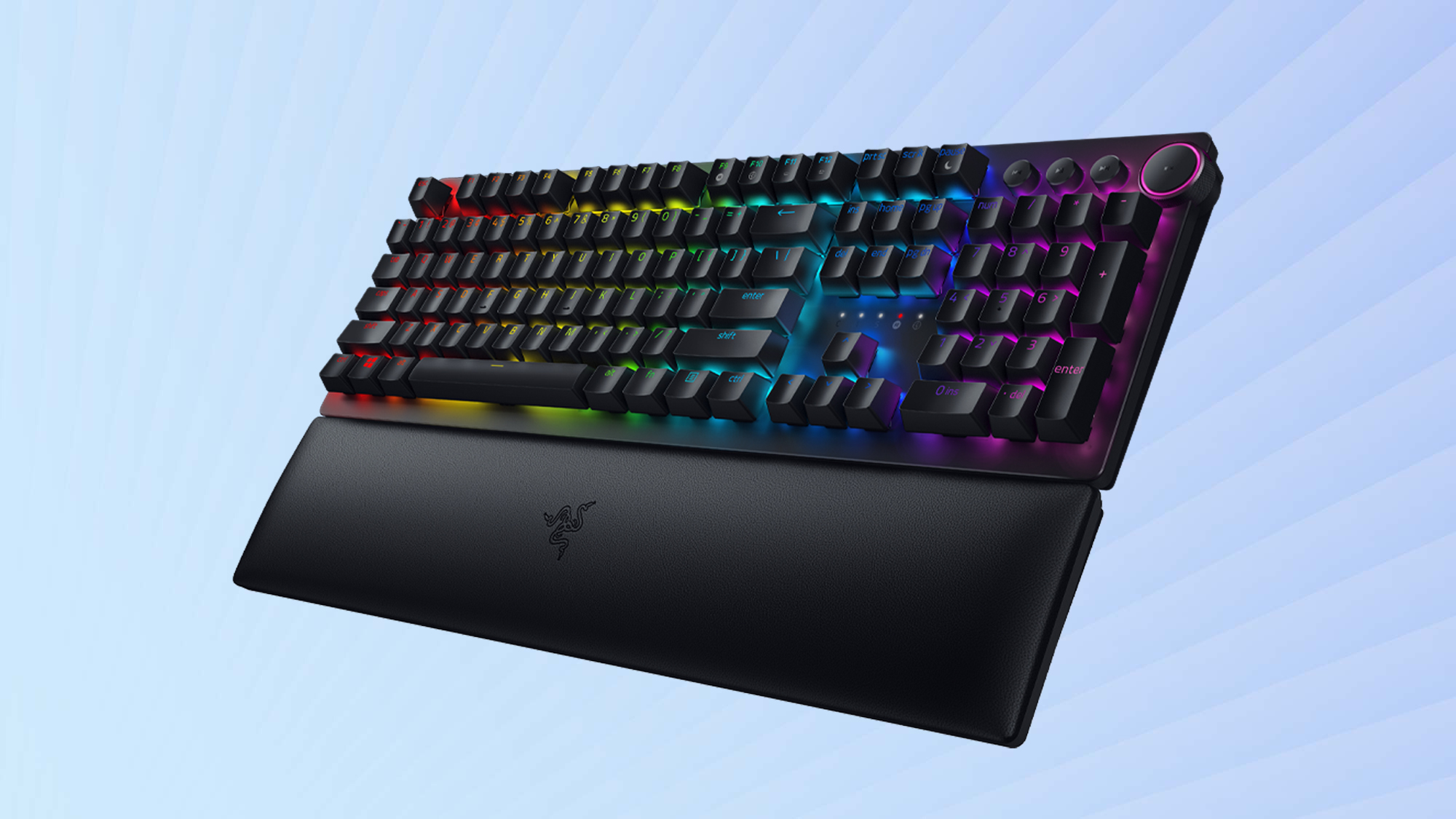
The Huntsman V2 is a large keyboard, measuring 17.5 x 5.5 x 1.0 inches. This is pretty much in line with other full-size gaming keyboards, but be sure you have the requisite desk space before you drop $200 on this peripheral.
Like the original Huntsman, the Huntsman V2 has big, discrete media keys in the upper-right, including a volume wheel that just barely overhangs the edge of the keyboard. The keyboard also has per-key RGB lighting, although it no longer possesses the wraparound LED strip that made the original Huntsman so distinctive. I don’t think it’s any great loss, especially since the keyboard is a little cheaper as a result, but RGB aficionados should probably stick with the older model. The keyboard also comes with a detachable magnetic wrist rest.
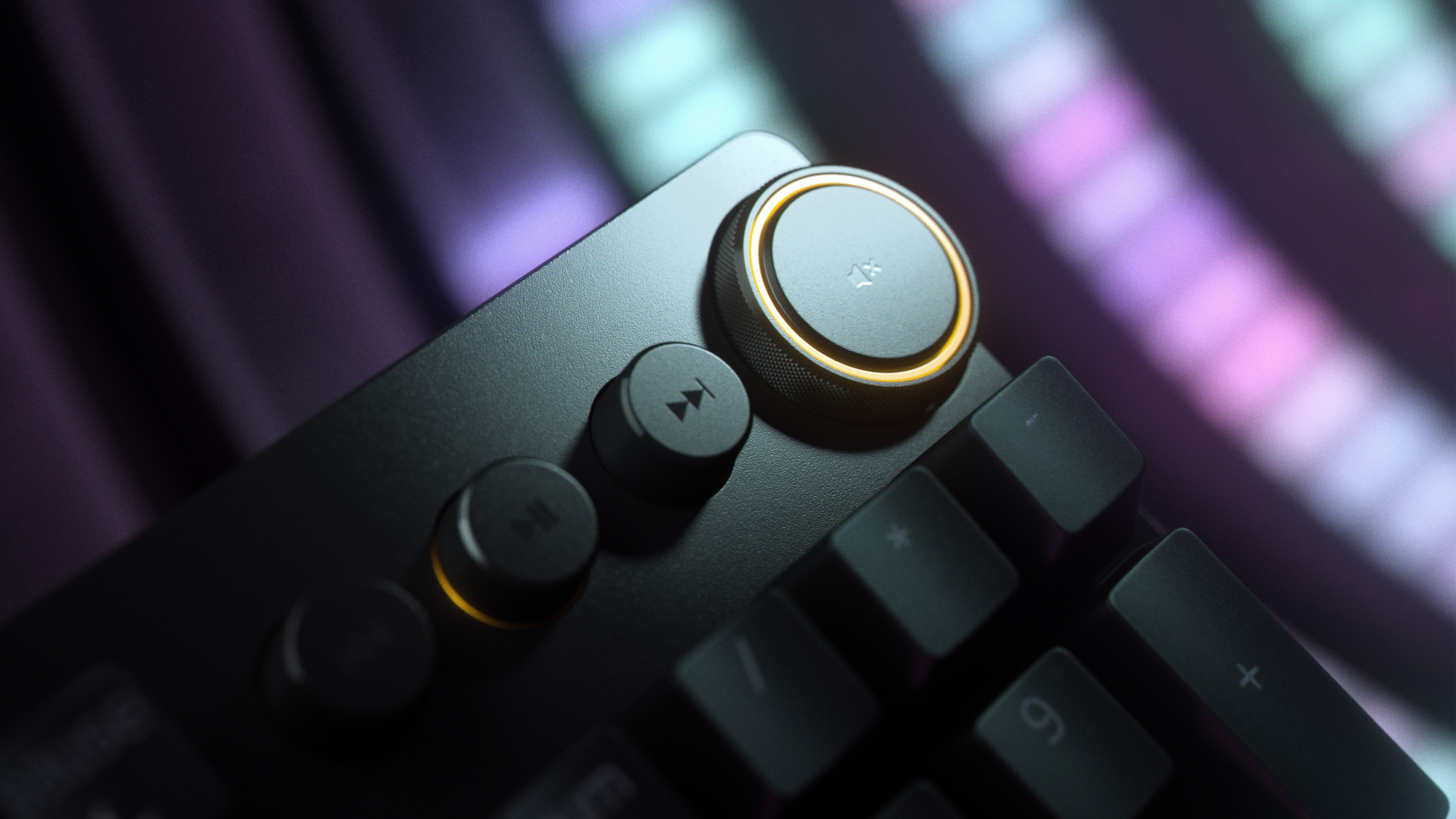
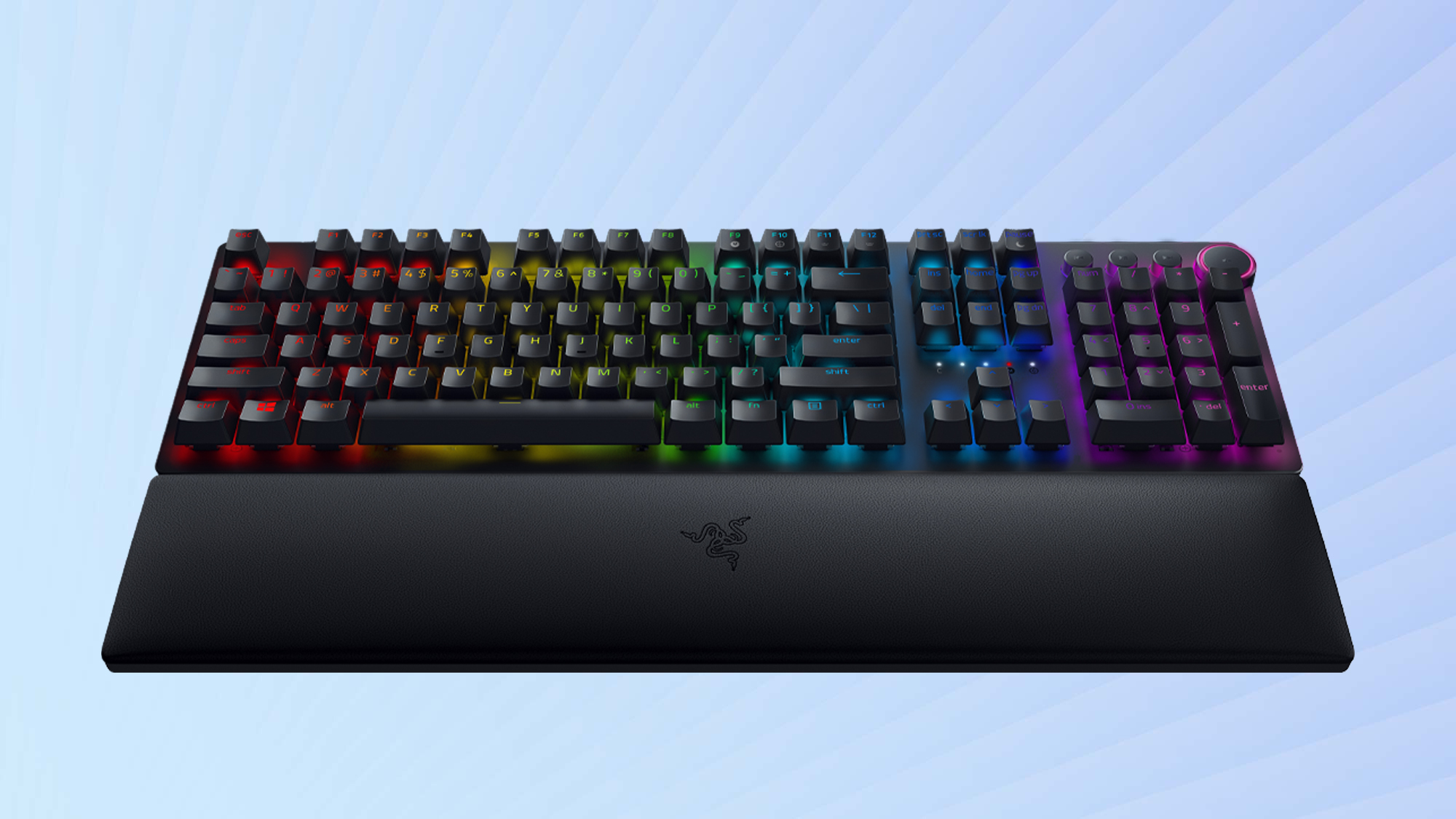
It’s difficult to find anything to criticize in the Huntsman V2’s design. Everything simply looks and feels good – although I’ll grant that everything also simply looked and felt very good in the previous model.
Razer Huntsman V2 review: Keys
If you buy the Razer Huntsman V2, you’ll have a choice of Razer Purple Clicky or Razer Linear Red switches. As the name suggests, the purple switches are loud and tactile; the red switches are quiet and linear. Our review model came with Purple Clicky switches, and I can verify that they are both purple and clicky. They don’t feel as good as Cherry MX Blues, but then again, what does?

Still, the keys are the Huntsman V2’s unique selling point. For those who aren’t familiar with the Huntsman line, it employs optical switches rather than mechanical ones. This means that rather than depressing a switch, the keyboard sends signals through manipulating light. In theory, this means that the Huntsman V2 sends and receives signals much, much faster than a purely mechanical model. In practice, of course, it’s still dependent on how efficiently you hit the keys in the first place, so it’s probably not a concern for the average gamer.
In terms of typing, at least, the Huntsman V2 is speedy. On a Typing.com test, I scored 123 words per minute with 98% accuracy, compared to 117 wpm with 98% accuracy on a standard membrane laptop keyboard.
Razer Huntsman V2 review: Features
Like most modern Razer peripherals, the Razer Huntsman V2 runs on the Razer Synapse software. This comprehensive application lets you reprogram keys, set up profiles for individual games, manipulate the RGB lighting, assign alternate functions to the volume wheel and more. Over time, the program has become much more navigable and stable. While it can be a little convoluted, especially if you want to program your own customized RGB patterns, it’s simple enough to get around for everyday tasks.
As for the RGB lighting itself, it’s bright and colorful. You also have plenty of attractive presets at your disposal if you don’t feel like messing around with the Razer Chroma software. One improvement over the previous Huntsman is that now the keyboard connects with a single USB cable, rather than a dual-pronged USB cable for basic functionality and RGB features.
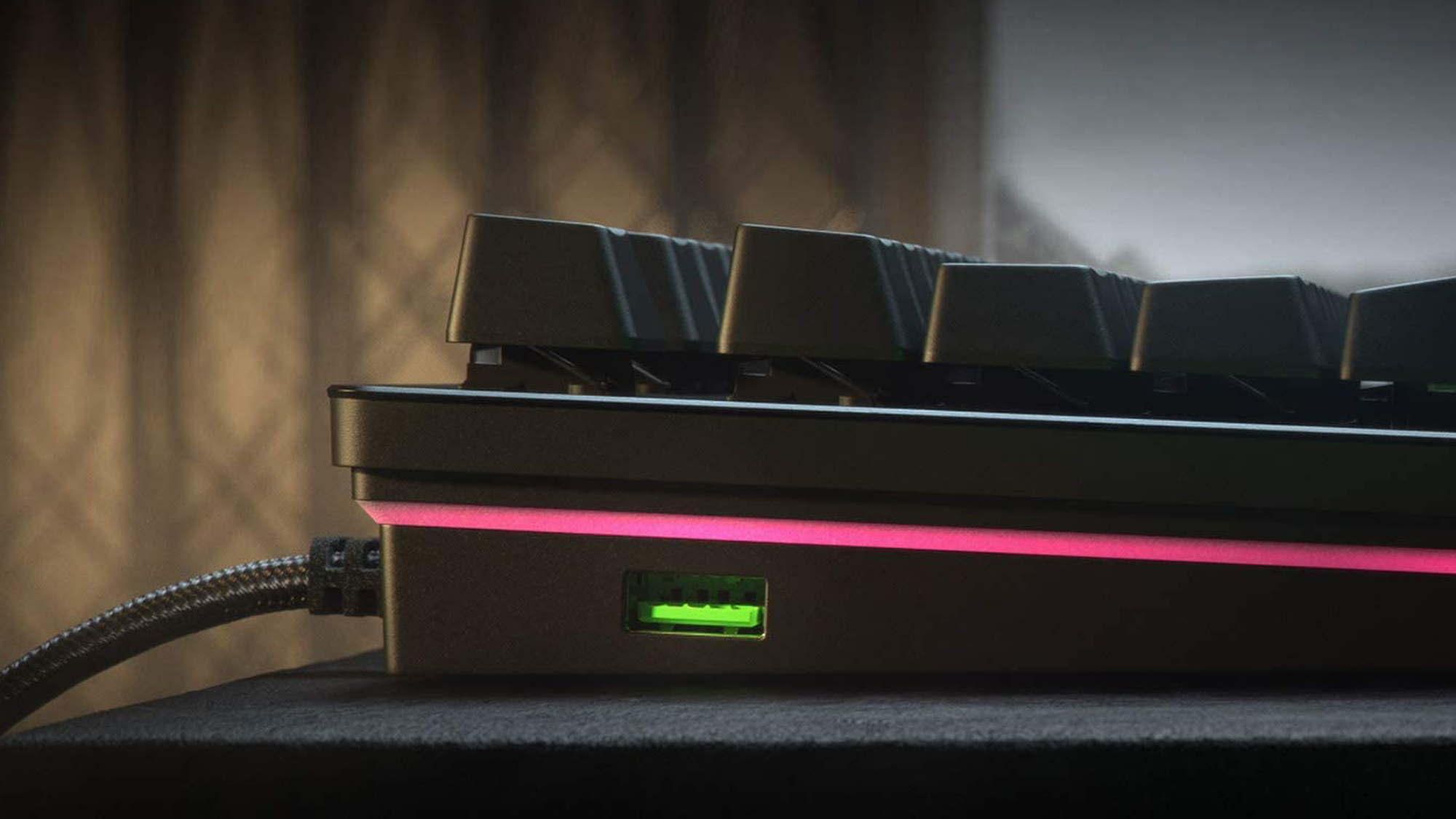
Razer also claims that the Huntsman V2 is quieter than its predecessor. To illustrate this point, a representative typed on both keyboards back-to-back. However, while the Huntsman V2 had a “gentler” sound to it, I’m not sure whether it was actually quieter, or simply less distracting. The company did not have decibel data available. I didn’t find the Purple Clicky keys especially distracting, for what it’s worth, and the Red Linears should be quieter.
Razer Huntsman V2 review: Performance
No matter what you like to play, the Razer Huntsman V2 can handle it. I tested the peripheral with Age of Empires III: Definitive Edition, Deathloop, Baldur’s Gate III and Final Fantasy XIV, and found that it excelled across the board. Whether I was issuing orders to colonial armies or exploring huge high-fantasy cities, the Huntsman V2 responded to my commands quickly and accurately. The keyboard was at its best, of course, when I found myself pounding the same keys over and over for split-second commands in Deathloop.
Razer provided me with all sorts of statistics as to why the Huntsman V2 parses commands faster than its competitors, and I don’t doubt this is true. At the same time, I still wonder how much of a difference it makes during everyday play. The speed of light and the speed of a mechanical switch are objectively quite different, but both of them still start with the player deciding when to depress a key. Still, if you play at a highly competitive level, where every split-second counts, the Huntsman V2 is unlikely to do any harm, at least.
Razer Huntsman V2 Tenkeyless differences
If you’re unable to accommodate a full-size keyboard at your desk, there’s also the $150 (or $160) Razer Huntsman V2 Tenkeyless model. This is just what it sounds like: a Huntsman V2, sans number pad. The arrow keys and control keys are still present, however.
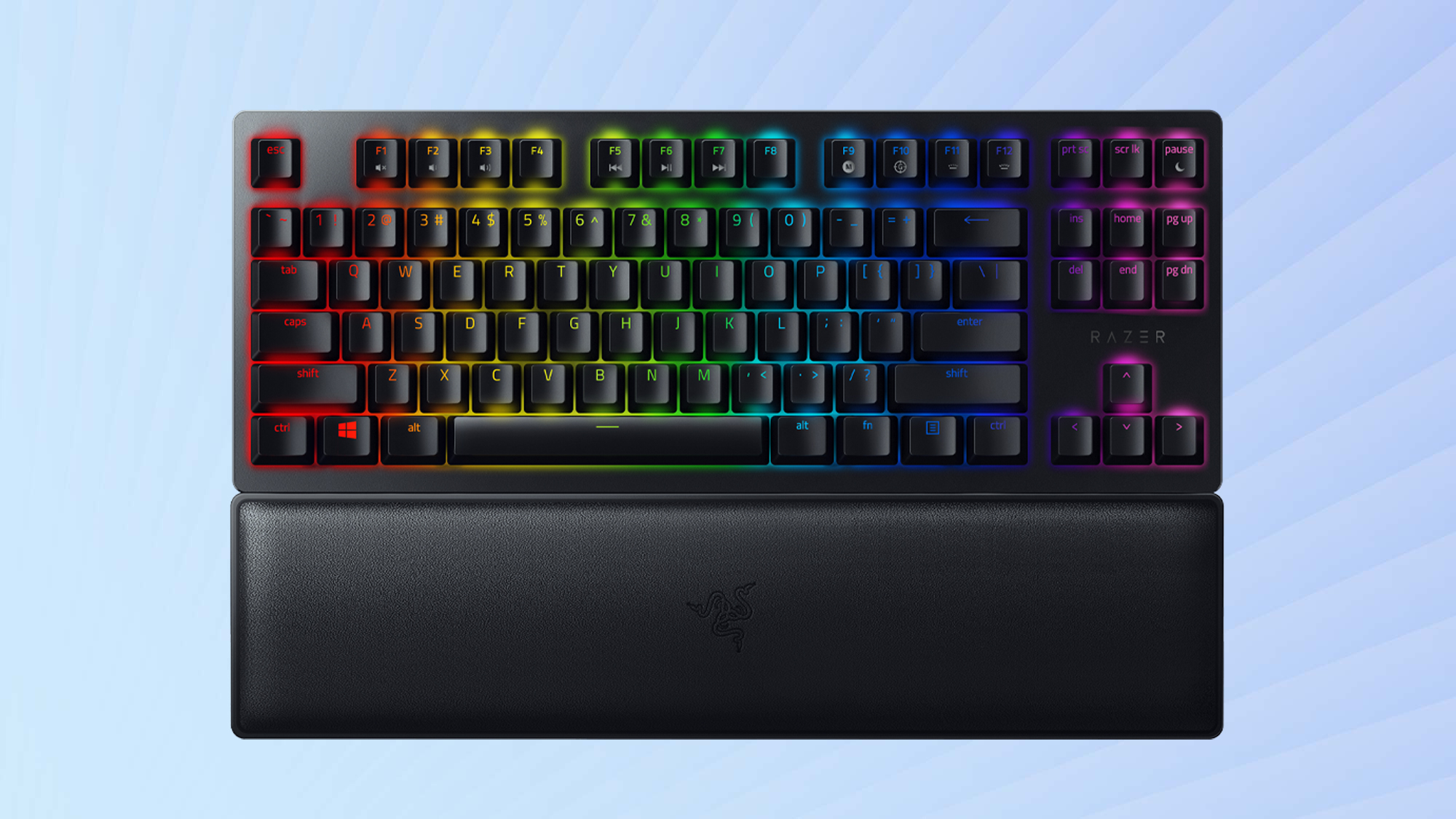
There are no discrete media keys, which puts this model at a significant disadvantage, compared to the regular Huntsman V2. On the other hand, the USB-C-to-USB-A power cable is detachable, which makes the Huntsman V2 Tenkeyless easy to transport. I also appreciated how the USB-C port slides into a notch in the keyboard, so there’s no risk of disconnection during gameplay.
Beyond that, the Huntsman V2 Tenkeyless has identical switches, functionality and performance.
Razer Huntsman V2 review: Verdict
There’s no denying that the Razer Huntsman V2 is a slight upgrade. But it’s a slight upgrade of an excellent peripheral, eschewing a few needless features while keeping what worked well the first time around.
At $200 or thereabouts, the Huntsman V2 is considerably more expensive than the $140 BlackWidow V3, which has a similar design with purely mechanical switches. If I had to choose, I’d go with the BlackWidow and use the $60 on a new game, but I also don’t play in the upper echelons of competitive multiplayer. If you want to game at the speed of light (or as close as your fingers can get), then the Huntsman V2 is worth a look.
Marshall Honorof is a senior editor for Tom's Guide, overseeing the site's coverage of gaming hardware and software. He comes from a science writing background, having studied paleomammalogy, biological anthropology, and the history of science and technology. After hours, you can find him practicing taekwondo or doing deep dives on classic sci-fi.


